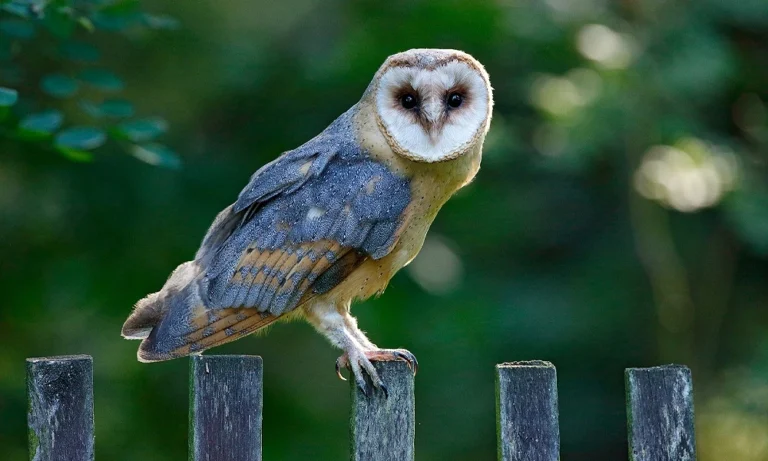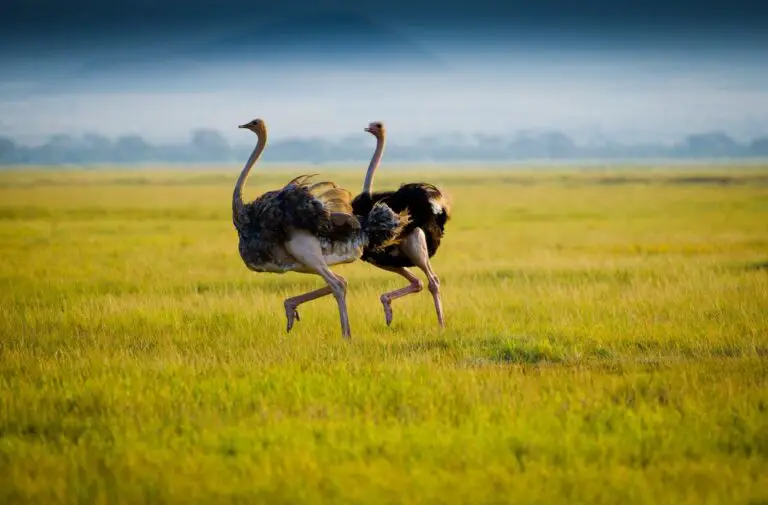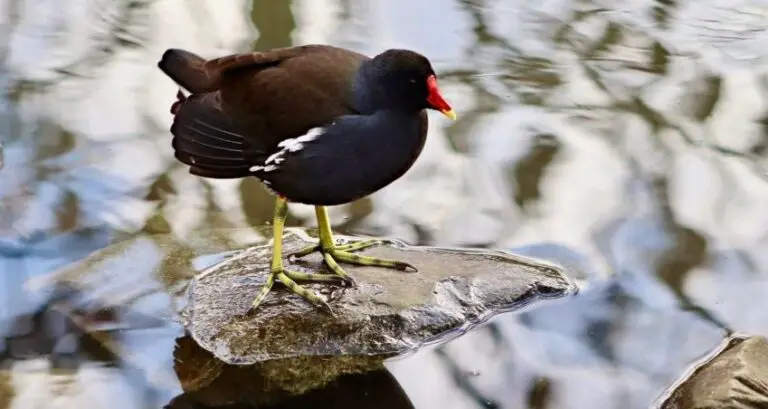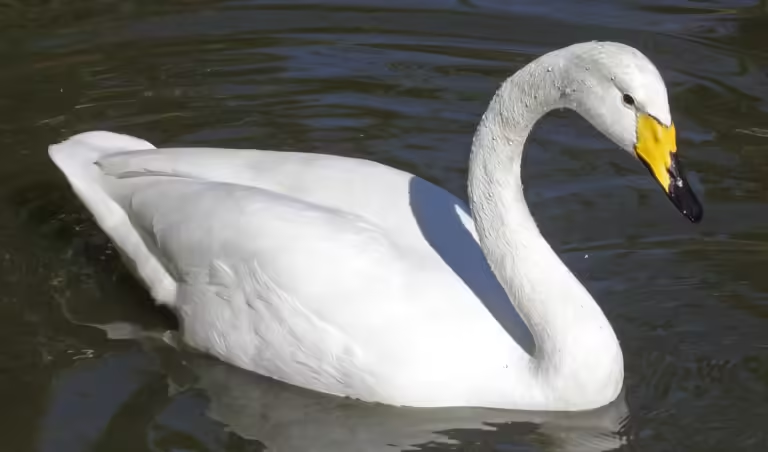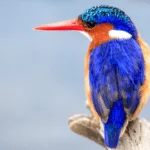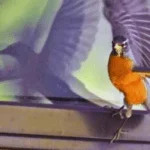Imagine walking through a park on a beautiful sunny day, the birds chirping and flitting from tree to tree. You look up, marveling at their grace and elegance, when suddenly, a splatter of bird poop lands on your shoulder. Annoying, right? So the question is, How Often Do Birds Poop?
But have you ever wondered how often birds actually poop? Well, get ready to be surprised, because the truth is about to be revealed!
In this article, we will delve into the importance of bird poop in ecosystems, explore the science behind bird poop frequency, debunk some myths surrounding bird poop, and discuss the impact of bird poop on human structures.
So, if you’ve ever been curious about this seemingly mundane aspect of avian life, keep reading to discover the surprising truth about how often birds really do let it fly!
Key Takeaways
- Bird droppings play a vital role in supporting the food web in aquatic ecosystems and contribute to seed dispersal, plant reproduction, and ecosystem restoration.
- The frequency, consistency, and appearance of bird droppings can provide valuable insights into a bird’s health and digestive system.
- Birds of different sizes and species have varying pooping habits, with small birds producing small, dark droppings and large birds producing large, liquid-filled droppings.
- Environmental factors such as urbanization and habitat type can affect the frequency of bird droppings.
The Importance of Bird Poop in Ecosystems
The importance of bird poop in ecosystems cannot be underestimated. Bird poop, or guano, is a powerhouse of nutrients that nourishes the environment in ways you never imagined.
Bird poop is rich in nitrogen, phosphorus, and potassium, which are essential for plant growth. When birds poop on trees, plants, or the ground, these nutrients are released into the soil. This helps fertilize the plants and promotes their healthy growth. In fact, some plants have evolved to rely on bird poop as their main source of nutrients!
But it’s not just plants that benefit from bird poop. In aquatic ecosystems, bird droppings play a vital role in supporting the food web. When birds poop in water bodies like lakes or oceans, the nutrients are quickly absorbed by algae and plankton. These tiny organisms are then consumed by larger fish, which are in turn eaten by even larger predators. Without bird poop, this intricate chain of life would be disrupted, affecting the entire ecosystem.
So, the next time you see a bird flying overhead, remember that its poop is more than just a nuisance. It’s a natural fertilizer that helps maintain the delicate balance of ecosystems, supporting plant life on land and sustaining the food web in water.
Bird Poop: A Sign of Good Health
Bird droppings can actually serve as an indicator of a bird’s overall well-being. You might think that bird poop is just a messy inconvenience, but it can actually provide valuable information about a bird’s health. Healthy birds have regular and well-formed droppings, which are usually a combination of solid and liquid waste. The color, consistency, and frequency of their droppings can give you clues about their diet, hydration, and overall wellness.
If a bird’s droppings are watery or have a foul odor, it may indicate that the bird is suffering from diarrhea or an intestinal infection. On the other hand, if the droppings are too dry or have a chalky appearance, it could be a sign of dehydration or a diet lacking in essential nutrients. Monitoring their droppings regularly can help you identify any potential health issues early on.
Birds also have a unique way of excreting waste. Unlike mammals, they do not have a separate urinary system. Instead, their urine and feces are combined into one substance, which is expelled as a single dropping. So, the presence of both solid and liquid waste in their droppings is completely normal.
Next time you come across bird poop, don’t just dismiss it as a nuisance. Take a moment to observe its color, consistency, and any other abnormalities. It could provide valuable insights into the bird’s health and well-being.
The Science Behind Bird Poop Frequency
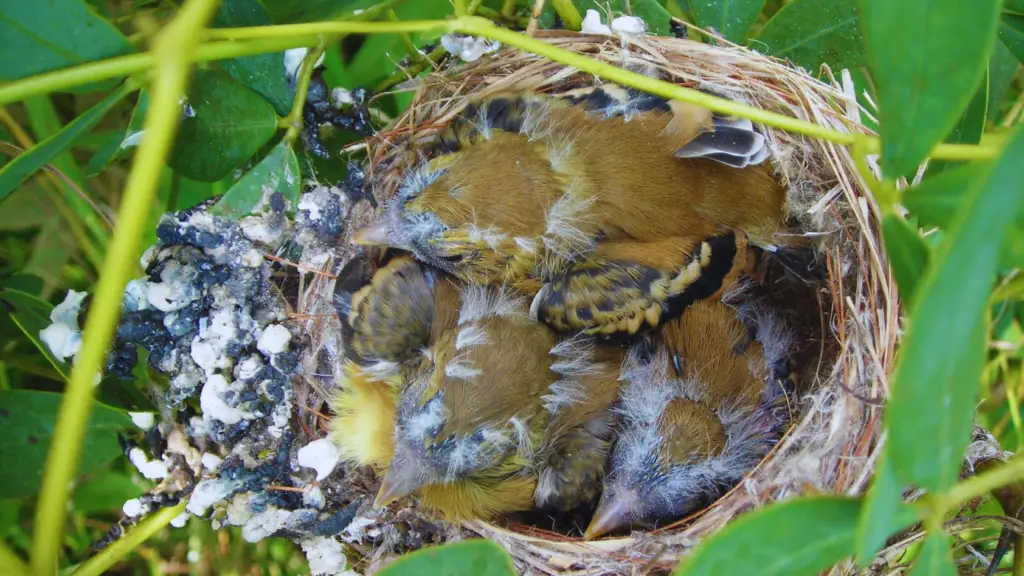
The frequency of bird droppings can be quite astonishing, as an average bird can produce up to 25 droppings per day. You might be wondering why birds poop so frequently. Well, there’s actually a scientific explanation behind it.
Birds have a fast metabolism, which means they digest their food quickly. This rapid digestion process allows them to extract all the nutrients they need from their meals efficiently. However, it also means that waste is produced at a faster rate.
Another factor that contributes to the frequency of bird poop is their unique digestive system. Birds have a one-way digestive tract, which means that food travels through their bodies relatively quickly. This efficient system allows them to eat multiple times a day and eliminates the need for a large storage capacity in their digestive system. As a result, birds need to eliminate waste more frequently.
It’s also worth noting that the size of bird droppings can vary depending on the bird species and their diet. Birds that consume a lot of fruits or berries tend to have more watery droppings, while those that eat insects or seeds produce more solid droppings.
So, the next time you see a bird flying overhead, remember that their frequent pooping is simply a result of their fast metabolism and efficient digestive system.
Factors Affecting Bird Poop Frequency
One fascinating aspect to consider is the impact of diet and eating habits on the frequency of bird droppings. Just like humans, birds’ digestive systems are influenced by what they consume. Certain foods can lead to more frequent bowel movements, resulting in an increased frequency of bird droppings. For example, birds that have a diet high in fiber, such as fruits and vegetables, tend to produce more droppings compared to those that primarily eat seeds or insects. Additionally, the amount of food consumed can also affect the frequency of bird droppings. Birds that eat smaller meals more frequently throughout the day are likely to have more frequent bowel movements compared to those that eat larger meals infrequently.
To better understand the relationship between diet and bird droppings, let’s take a look at the following table:
| Diet | Frequency of Bird Droppings |
|---|---|
| High Fiber | Increased |
| Seeds/Insects | Decreased |
| Small, Frequent Meals | Increased |
As you can see, the type of diet and eating habits play a significant role in determining how often birds poop. By understanding these factors, we can gain a better understanding of the surprising truth behind bird poop frequency.
Diet and Digestion
Understanding bird droppings requires exploring the impact of diet and digestion on their frequency. Birds have a unique digestive system that efficiently processes their food. The type of food they consume directly affects the frequency of their droppings.
Birds that eat a diet high in water content, like fruits and berries, tend to have looser and more frequent droppings. The excess water in their diet lubricates their digestive system and moves waste through their bodies quickly.
In contrast, birds that eat a diet high in protein, such as insects and meat, have denser and less frequent droppings. Protein-rich foods take longer to digest and produce less waste.
The size of the bird also plays a role in the frequency of their droppings. Smaller birds have faster metabolisms and eliminate waste more frequently.
In summary, diet and digestion are key factors that determine the frequency and consistency of bird droppings.
Size and Species of Birds
Get ready to be amazed by the diversity of bird species and their varying sizes, which greatly influence the appearance and frequency of their droppings.
Birds come in all shapes and sizes, from the tiny hummingbird to the majestic eagle. And just like their sizes differ, so do their droppings. Here are some fascinating facts about how size and species affect bird droppings:
- Small birds like sparrows and finches have small droppings that are usually dark in color. These tiny droppings are often overlooked and can easily be mistaken for dirt or debris.
- Medium-sized birds like pigeons and crows produce larger droppings. These droppings are usually cylindrical in shape and can vary in color from white to gray.
- Large birds like seagulls and pelicans have the most impressive droppings. These droppings are large, liquid-filled, and have a distinct white color. They can be quite messy and are often seen splattered on sidewalks or car windshields.
- Some bird species, like owls and hawks, produce pellets instead of traditional droppings. These pellets are regurgitated by the birds and contain the indigestible parts of their prey, such as bones and fur.
So, next time you come across bird droppings, take a moment to appreciate the incredible diversity of bird species and their unique droppings.
Environmental Factors
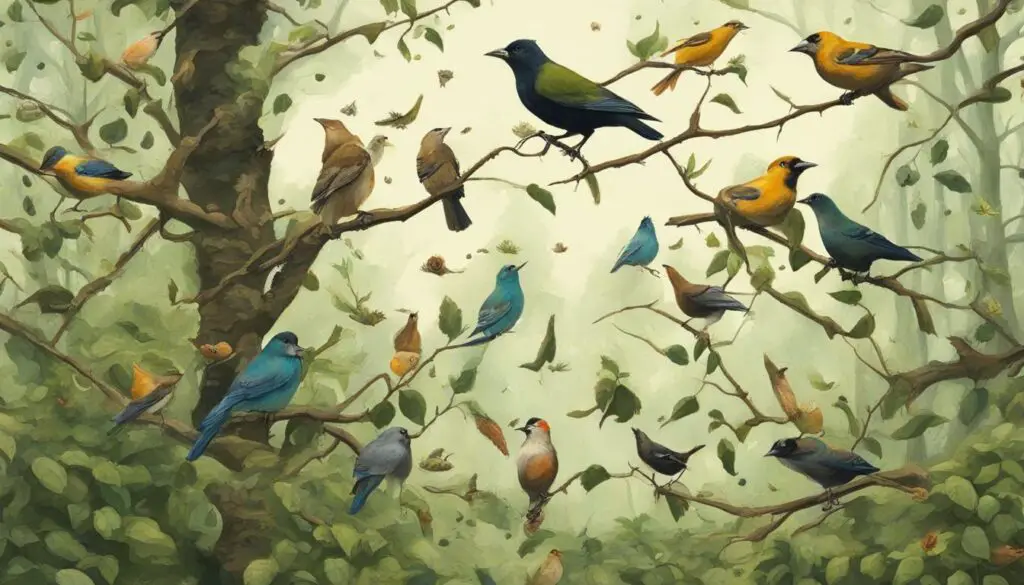
Now that you understand how the size and species of birds can affect their bathroom habits, let’s move on to another important factor: environmental conditions. Just like humans, birds are influenced by their surroundings when it comes to relieving themselves.
Different environments can have a significant impact on the frequency of a bird’s bowel movements. For example, birds living in urban areas may have to navigate through tall buildings and busy streets, which can be stressful and restrict their opportunities to poop. On the other hand, birds in rural or forested areas might have more freedom to go whenever and wherever they please.
To help you visualize this concept, here’s a table that illustrates how environmental factors can affect the poop frequency of birds:
| Environment | Poop Frequency |
|---|---|
| Urban | Less frequent |
| Rural/Forested | More frequent |
| Coastal | Variable |
| Mountainous | Variable |
As you can see, the environment plays a crucial role in determining how often birds relieve themselves. So, the next time you spot a bird soaring through the sky, consider the environment it calls home, and you might just gain a newfound appreciation for its bathroom habits.
Bird Poop: A Natural Fertilizer
Contrary to popular belief, bird droppings serve as a natural fertilizer, enriching the soil with essential nutrients.
When birds poop, they release a mixture of uric acid, feces, and water. This combination may not sound appealing, but it actually contains high levels of nitrogen, phosphorus, and potassium – three key nutrients that plants need to thrive.
As bird droppings decompose, these nutrients are slowly released into the soil, providing a sustainable source of nourishment for plants. The nitrogen in the droppings promotes leafy growth, while phosphorus aids in root development. Potassium, on the other hand, helps plants withstand stress and disease.
Bird poop also improves soil structure by increasing its water-holding capacity and enhancing its ability to retain nutrients. This means that even in arid conditions, the soil can still support plant growth. Additionally, the organic matter in bird droppings improves soil fertility, allowing for better nutrient absorption by plant roots.
While it may not be the most pleasant thought, next time you see bird droppings on your car or garden, remember that it’s not just a nuisance – it’s nature’s way of providing essential nutrients to the soil. So, embrace the benefits of bird poop and let it work its magic in your garden.
Bird Poop and Seed Dispersal
When you find bird droppings on the ground, you may not realize that they are playing a vital role in seed dispersal. They act as a sticky adhesive that helps seeds attach to various surfaces. For instance, imagine walking through a forest and noticing an array of plant species growing on the trunks of trees, thanks to the bird droppings that carried their seeds there.
Here are four fascinating ways bird poop contributes to seed dispersal:
- Survival: Bird droppings allow seeds to reach new locations, increasing their chances of survival. Without bird droppings, many plant species would struggle to spread and colonize new areas.
- Biodiversity: By dispersing seeds, bird droppings contribute to the diversity of plant species in an ecosystem. This diversity is crucial for maintaining a healthy and balanced environment.
- Ecosystem Restoration: In areas where human activities have caused habitat destruction, bird droppings can play a role in restoring ecosystems by aiding in the regeneration of plant life.
- Food Chain: Bird droppings not only benefit plants but also provide a source of nutrients for other organisms. Insects and microorganisms can break down the droppings, releasing nutrients into the soil and supporting the entire food chain.
So, the next time you come across bird droppings, remember their surprising role in seed dispersal and the important contributions they make to the natural world.
The Role of Bird Poop in Plant Reproduction
As you walk through a lush forest, imagine the vibrant plant life thriving around you, their seeds dispersed by the sticky adhesive of bird droppings. Yes, you read that right! Bird poop plays a crucial role in plant reproduction. When birds consume fruits and berries, they digest the pulp and extract nutrients, but the seeds pass through their digestive system unharmed. As these birds fly from tree to tree, the seeds are excreted in their droppings, allowing them to spread far and wide. This method of seed dispersal, known as endozoochory, helps plants colonize new areas and ensures genetic diversity.
To understand the significance of bird poop in plant reproduction, let’s take a look at the table below:
| Plant Species | Bird Species | Seed Dispersal Method |
|---|---|---|
| Oak Tree | Blue Jay | Endozoochory |
| Strawberry | Robin | Endozoochory |
| Fig Tree | Toucan | Endozoochory |
As you can see, various plant species rely on different bird species to spread their seeds. Without the help of bird poop, these plants would struggle to reproduce and adapt to changing environments. So, the next time you come across bird droppings, remember the vital role they play in the beautiful flora surrounding you.
Interesting Facts About Bird Poop
Now that you’ve learned about the role of bird poop in plant reproduction, let’s dive into some interesting facts about bird poop itself. You might be surprised to discover just how fascinating this topic can be.
Firstly, did you know that bird poop comes in a variety of colors? Yes, that’s right! From white and green to brown and even black, the color of bird droppings can vary depending on the bird’s diet. So, the next time you spot a colorful splatter on your car, you can thank a bird for the vibrant display.
Another intriguing fact is that bird poop is not just waste; it can also be a valuable resource. Historically, people have used bird droppings, known as guano, as a natural fertilizer due to its high nutrient content. In fact, guano was so highly prized that wars were fought over control of guano-rich islands!
Lastly, bird poop plays a crucial role in the ecosystem. It helps to disperse seeds, fertilize plants, and even provides food for other organisms like insects. So, the next time you see a bird overhead, remember that its poop is contributing to the beauty and diversity of the natural world.
In conclusion, bird poop is not just an unpleasant mess; it holds a surprising amount of importance and intrigue. From its vibrant colors to its role in plant reproduction and ecological balance, bird droppings are truly fascinating.
Bird Poop Myths Debunked
Contrary to popular belief, bird droppings are not just a nuisance, but rather an intriguing topic full of myths waiting to be debunked. Let’s dive into some of the most common misconceptions about bird poop and uncover the truth.
| Myth | Truth |
|---|---|
| Bird droppings are good luck | There is no scientific evidence to support this belief. It is purely a superstition. |
| Bird poop is always white | The color of bird droppings can vary depending on their diet. It can range from white to green, brown, or even black. |
| Bird droppings are acidic | While bird droppings can sometimes be acidic, not all of them are. The acidity depends on the bird’s diet and can vary. |
| Bird poop can damage car paint | This is true. Bird droppings contain uric acid, which can eat away at the paint if left untreated for too long. |
| Bird droppings are harmful to humans | Although it is not advisable to come into direct contact with bird droppings, they are generally not harmful to humans. However, they can carry bacteria and parasites, so it’s best to avoid them. |
By debunking these myths, we can gain a better understanding of bird droppings and appreciate them for what they truly are – a natural occurrence that plays a role in the ecosystem. So, the next time you encounter bird poop, remember that there’s more to it than meets the eye.
The Impact of Bird Poop on Human Structures

Imagine walking down the street and suddenly, a splatter of bird droppings lands on the pristine surface of a freshly painted building, reminding you of the undeniable impact that bird poop can have on human structures. While it may seem like a harmless annoyance, bird poop can actually cause significant damage to buildings and other structures.
One of the main reasons why bird droppings are so harmful is their acidic nature. The high levels of uric acid found in bird poop can eat away at the paint and corrode metal surfaces over time. This can lead to costly repairs and maintenance for property owners. Additionally, the buildup of bird droppings can create a breeding ground for bacteria and fungi, which can further deteriorate the structure.
Not only does bird poop damage the appearance and structural integrity of buildings, but it can also pose health risks. The bacteria and fungi found in bird droppings can cause respiratory problems, especially for those with pre-existing conditions such as asthma. Inhaling the particles released when bird droppings dry and crumble can lead to serious health issues.
To prevent the negative impact of bird poop on human structures, it is important to take proactive measures. Installing bird deterrents such as spikes, nets, or scare devices can help keep birds away from buildings. Regular cleaning and maintenance should also be carried out to remove any accumulated droppings. By being proactive, you can protect your property and ensure its longevity.
How to Deal with Bird Poop in Your Surroundings
If you’re lucky enough to have bird poop in your surroundings, you can rest assured knowing that it’s a constant reminder of the exquisite beauty and charm that nature brings to your everyday life. While it may not be the most pleasant sight or smell, dealing with bird poop doesn’t have to be a daunting task. Here are four tips to help you effectively handle bird poop in your surroundings:
- Clean it up promptly: Bird droppings can be acidic and corrosive, so it’s important to clean them up as soon as possible. Use a mild detergent and water to gently scrub the affected area. Avoid using harsh chemicals that could cause damage.
- Protect your belongings: If you have outdoor furniture or vehicles, consider covering them when not in use to prevent bird droppings from accumulating. This can save you time and effort in cleaning later on.
- Install deterrents: There are various bird deterrents available, such as spikes, nets, or reflective devices, that can discourage birds from roosting or nesting in certain areas. These can be effective in reducing the amount of bird poop in your surroundings.
- Create alternative perches: Birds often leave droppings where they perch. By providing designated perching areas away from your belongings, such as birdhouses or bird feeders, you can redirect their attention and minimize the mess in other areas.
By following these tips, you can effectively deal with bird poop in your surroundings and maintain a cleaner and more enjoyable environment.
How Often Do Birds Poop: FAQs
How often do birds poop and does it vary between different bird species?
Birds poop frequently, and the frequency can vary among different bird species. Factors like diet, metabolism, and size influence how often they go. Some birds may poop multiple times an hour, while others may go less frequently.
Can bird poop be used as a natural fertilizer for plants?
Bird poop, nature’s fertilizer! Yes, you can use it to nourish your plants. It’s rich in nutrients like nitrogen and phosphorus, promoting healthy growth. So, don’t overlook this free and eco-friendly gardening hack!
How does bird poop play a role in seed dispersal and plant reproduction?
Bird poop plays a crucial role in seed dispersal and plant reproduction. When birds consume fruits, the seeds pass through their digestive system and are excreted in different locations, aiding in the spread and germination of plants.
Are there any interesting facts about bird poop that are not mentioned in the article?
There are indeed interesting facts about bird poop not mentioned in the article. For example, in some cultures, bird droppings are considered good luck. Additionally, bird poop is used in certain beauty products for its exfoliating properties.
How does bird poop impact human structures and what are the best ways to deal with it in our surroundings?
Bird poop can damage human structures, causing erosion and corrosion. To deal with it, you can regularly clean the affected areas, use bird deterrents like spikes or nets, or install devices that emit sounds to keep birds away.
Conclusion
So there you have it, folks! Now you know the surprising truth about how often birds poop.
It may seem like a trivial topic, but bird poop plays a vital role in our ecosystems.
It can indicate the health of these beautiful creatures and even help fertilize our gardens.
So next time you see a bird dropping, remember, it’s nature’s way of keeping things in balance.
Don’t let it ruffle your feathers, embrace the poop!



